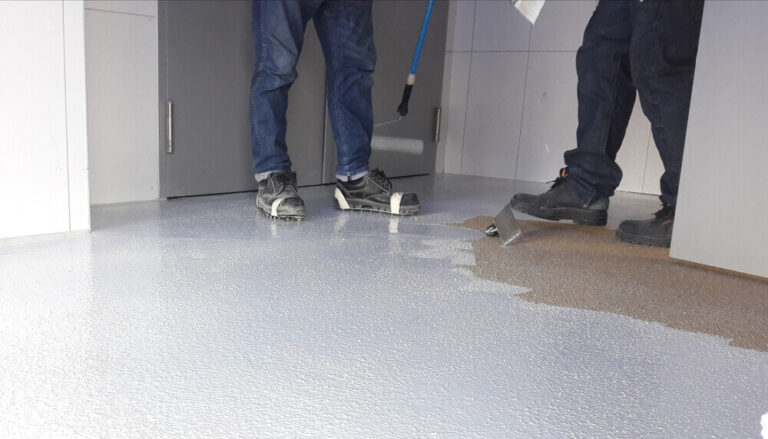There are many reasons why you might want to consider using epoxy flooring instead of another type of flooring. Some of the biggest benefits include:
- Epoxy flooring is extremely durable and resistant to moisture and moisture damage.
- It’s also easy to clean and maintain, which means you’ll always have a fresh, gleaming surface.
- Epoxy is also fire retardant, so it’s perfect for areas that may be exposed to high heat or flames.
- In addition, epoxy Flooring is environmentally friendly since it can be disposed of without harmful chemicals.
- It’s difficult to repair or replace if it starts to wear or tear.
- It’s not very durable and can start to crack and peel after a while.
- It’s also quite expensive compared to other flooring options.
Steps to Install epoxy flooring
epoxy flooring is a type of flooring made from polypropylene, which is a plastic that’s often used in outdoor furniture. The material is very strong and resistant to moisture and weather conditions, making it a great choice for locations like patios and decks.
To install WPC flooring, you will need to pre-measure the area you want to cover, as well as the thickness of the coating. You will also need to use a special adhesive that’s specifically designed for this type of flooring. After applying the adhesive, you will then start laying down the sheets of WPC flooring in a pattern that best suits your needs. Once everything is laid down, you will then apply another layer of adhesive to ensure that the floor remains stable throughout its lifespan.
WPC floors are a great option for those who want an affordable and durable alternative to traditional wood floors. They’re also easy to clean and maintain – perfect for busy households!
To install WPC flooring, you will first need to sand the surface smoothly. Next, apply a layer of epoxy to the surface using a spatula or roller. Make sure to spread the epoxy evenly throughout the surface so that it forms a continuous bond between the wood fibers and the plastic sheets. Finally, lay down the second layer of plastic sheets over the epoxy layer and press them down firmly with a mallet or hammer. You can then finish off the installation by applying additional coats of epoxy until your desired level of durability is reached.
How to Properly Maintain epoxy flooring
WPC flooring is a popular and economical choice for people who want a durable, waterproof surface. It’s also easy to maintain – just follow these simple tips:
- Make sure you clean it regularly. WPC flooring is susceptible to dust, dirt, and other debris, so it needs to be cleaned regularly to prevent damage. You can use a vacuum cleaner or a mop with warm water and soap.
- Keep it dry. Most epoxy floorings are moisture-resistant, but if they do get wet, be sure to dry them off as quickly as possible so that the moisture doesn’t cause delamination or other damage.
- Protect it from scratches and staining. Epoxy floors can be scratched easily – keep your furniture and other items away from them! And don’t forget about stains – epoxy floors are not indestructible, so be sure to treat them carefully if they happen to get stained. All you need is some mild detergent and plenty of water to clean them up properly.

